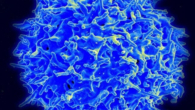
Vitamin B3 deficiency: signs that can be seen on the skin
0
Vitamin B3 , or niacin, is one of the eight B vitamins. It helps convert food into energy, helps the body absorb proteins and fats, and supports the health of the skin, hair, and nervous system.
A lack of this vitamin can lead to the development of vitamin deficiency, known as pellagra. In addition, symptoms of mild niacin deficiency can be:
- indigestion;
- fatigue;
- vomiting;
- ulcer;< /li>
- depression.
Lack of vitamin B3 has the greatest effect on the skin and the condition of the gastrointestinal tract. Deficiency of this vitamin is sometimes the result of drinking large amounts of alcohol, warns Express. When a person does not get enough niacin, there is a high risk of developing pellagra.
One of its main symptoms is dry and scaly skin on various parts of the body, including the heels. Cracks may also appear on the skin of the heels. Also, pellagra can be characterized by dementia, diarrhea and dermatitis. Dermatitis associated with pellagra usually presents as a rash on the face, lips, feet, or hands, and some people develop rashes around the neck.
Additional symptoms of dermatitis include:
- skin reddens and peels;
- some areas of the skin change color, from red to brown;
- thickening of the skin, the appearance of crusts, scales;
- itching and burning.
At the same time, experts remind, a lot depends on the diet. A person can get the necessary amount of vitamin B3 by regularly eating foods such as beets, brewer's yeast, salmon and peanuts.









Leave a Reply